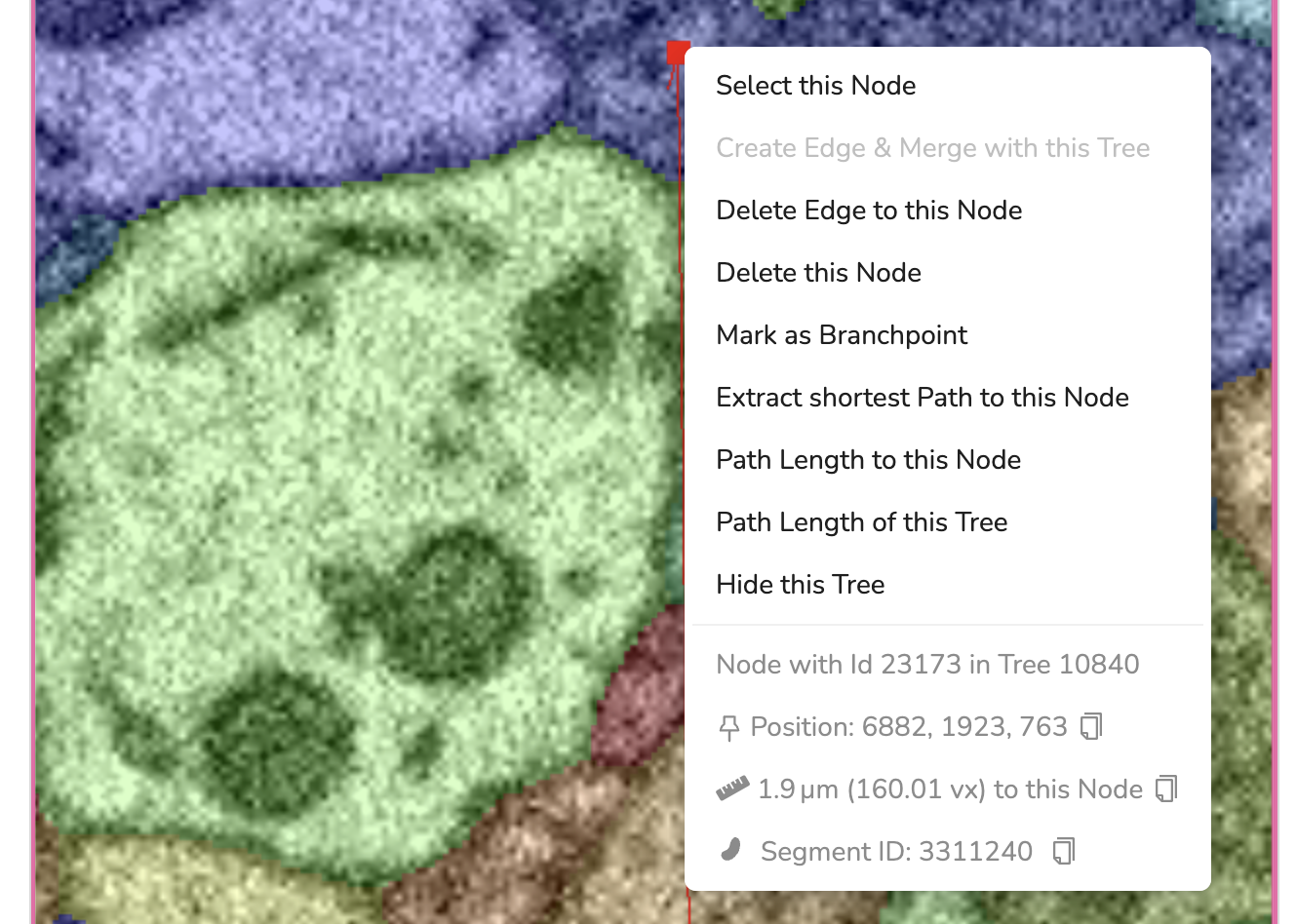Skeleton operations¶
Operations with the Context Menu¶
WEBKNOSSOS has a context menu that can be opened via Right Click. This context menu offers useful context-sensitive information and most operations should be available through it:
Example of the context menu
Example operations include (but are not limited to):
- Clicking on a node:
- measuring the path length of the active node to the selected node
- measuring the path length of a tree
- node deletion
- marking a node as branchpoint
- tree merging & splitting
- extracting shortest path to a node
- hiding tree
- Clicking on a volume segmentation:
- compute or load its 3D mesh
- flood-filling the segment (assigning a new ID)
- Clicking on the background data:
- Creating a new node or tree
- Creating a new bounding box
Merging / Splitting Trees¶
Common tree operations include splitting and merging trees.
-
Tree splittingcan be done in two ways:- Delete the node at which to split. This can be done by right-clicking a node and choosing "Delete this Node". If you have enabled Classic Controls, you need to select (SHIFT + Left Click) the node first and then delete (DEL) it.
- Delete an edge between two nodes. Select the first node (Left Click), then right-click the second node and select Delete Edge to this Node. If you have enabled Classic Controls, you need to select the first node with Shift + Left Click and then click on the second node with SHIFT + CTRL + Left Click on the second node of the edge to delete this connection.
-
Tree mergingworks similarly to edge deletion but will create a new edge between two previously unconnected trees. Select the first node and right-click on a second one to choose Create Edge & Merge with this Tree. When using Classic Controls, the second node needs to be selected with SHIFT + ALT + Left Click to create an edge between the two.
Trees can be split by deleting the edge between two nodes or deleting a node. Two trees can be merged again by creating a new edge between them.
- Get Help
- Community Forums
- Email Support

